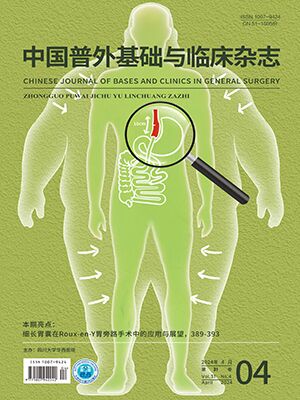| 1. |
《老年人四肢动脉粥样硬化性疾病诊治中国专家建议2012》写作组, 中华医学会老年医学分会, 中华医学会外科学分会血管外科专业组, 等. 老年人四肢动脉粥样硬化性疾病诊治中国专家建议(2012). 中华老年医学杂志, 2013, 32(2): 121-131.
|
| 2. |
Song P, Rudan D, Zhu Y, et al. Global, regional, and national prevalence and risk factors for peripheral artery disease in 2015: an updated systematic review and analysis. Lancet Glob Health, 2019, 7(8): e1020-e1030. doi: 10.1016/S2214-109X(19)30255-4.
|
| 3. |
Narula N, Olin JW, Narula N. Pathologic disparities between peripheral artery disease and coronary artery disease. Arterioscler Thromb Vasc Biol, 2020, 40(9): 1982-1989.
|
| 4. |
Narula N, Dannenberg AJ, Olin JW, et al. Pathology of peripheral artery disease in patients with critical limb ischemia. J Am Coll Cardiol, 2018, 72(18): 2152-2163.
|
| 5. |
Loeffen R, van Oerle R, Leers MP, et al. Factor Ⅺa and thrombin generation are elevated in patients with acute coronary syndrome and predict recurrent cardiovascular events. PLoS One, 2016, 11(7): e0158355. doi: 10.1371/journal.pone.0158355.
|
| 6. |
王秋云, 陈桢玥. 血小板和炎症在动脉硬化血栓形成中的研究进展. 内科理论与实践, 2017, 12(3): 212-215.
|
| 7. |
陈柏楠, 侯玉芬, 周涛. 周围血管疾病中西医诊疗学. 中国中医药出版社, 1999.
|
| 8. |
Hirsch AT, Haskal ZJ, Hertzer NR, et al. ACC/AHA 2005 Practice Guidelines for the management of patients with peripheral arterial disease (lower extremity, renal, mesenteric, and abdominal aortic): a collaborative report from the American Association for Vascular Surgery/Society for Vascular Surgery, Society for Cardiovascular Angiography and Interventions, Society for Vascular Medicine and Biology, Society of Interventional Radiology, and the ACC/AHA Task Force on Practice Guidelines (Writing Committee to Develop Guidelines for the Management of Patients With Peripheral Arterial Disease): endorsed by the American Association of Cardiovascular and Pulmonary Rehabilitation; National Heart, Lung, and Blood Institute; Society for Vascular Nursing; TransAtlantic Inter-Society Consensus; and Vascular Disease Foundation. Circulation, 2006, 113(11): e463-e654. doi: 10.1161/CIRCULATIONAHA.106.174526.
|
| 9. |
中华医学会外科学分会血管外科学组. 下肢动脉硬化闭塞症诊治指南. 中华普通外科学文献(电子版), 2016, 10(1): 1-18.
|
| 10. |
Zou JB, Zhang XF, Wang J, et al. The therapeutic efficacy of danhong injection combined with percutaneous coronary intervention in acute coronary syndrome: a systematic review and meta-analysis. Front Pharmacol, 2018, 9: 550. doi: 10.3389/fphar.2018.00550.
|
| 11. |
朱培欣, 王闯胜, 陈锦州, 等. 金属裸支架联合术后抗凝对下肢动脉硬化闭塞症的疗效. 深圳中西医结合杂志, 2019, 29(16): 120-121.
|
| 12. |
苏少飞, 田玉峰, 陈林宝, 等. 抗凝联合抗血小板聚集治疗预防糖尿病下肢动脉硬化闭塞症支架植入后再狭窄的疗效分析. 中国普通外科杂志, 2015, 24(6): 823-827.
|
| 13. |
苏少飞, 李全成, 陈林宝, 等. 抗凝联合抗血小板预防糖尿病下肢动脉硬化闭塞症支架植入后再狭窄的效果观察. 中国糖尿病杂志, 2017, 25(3): 218-221.
|
| 14. |
白森. 抗血小板联合抗凝药物治疗冠心病合并下肢动脉闭塞的临床效果. 中国当代医药, 2022, 29(3): 17-24.
|
| 15. |
孙缙红, 王剑, 张杰. 抗血小板联合抗凝治疗预防糖尿病下肢动脉硬化闭塞症支架植入后再狭窄疗效观察. 中国药师, 2016, 19(5): 935-937, 938.
|
| 16. |
杨金江, 李留江, 沈仕俊, 等. 利伐沙班用于股腘动脉粥样硬化闭塞支架植入术后的临床观察. 昆明医科大学学报, 2020, 41(11): 83-87.
|
| 17. |
赵伦德, 刘胜, 尹庆雨, 等. 探讨新型口服抗凝剂联合抗血小板治疗下肢动脉支架植入术后再狭窄的安全性和临床疗效. 临床研究, 2021, 29(5): 65-66.
|
| 18. |
王峰. 小剂量利伐沙班联合阿司匹林用于下肢动脉硬化闭塞症腔内治疗术后的临床效果. 临床合理用药杂志, 2022, 15(19): 4-7.
|
| 19. |
程国兵, 王李华, 陆炜, 等. 抗凝联合抗血小板提高下肢动脉长段闭塞腔内治疗术后一期通畅率的临床观察. 中华普通外科杂志, 2015, 30(10): 828-829.
|
| 20. |
Anand SS, Bosch J, Eikelboom JW, et al. Rivaroxaban with or without aspirin in patients with stable peripheral or carotid artery disease: an international, randomised, double-blind, placebo-controlled trial. Lancet, 2018, 391(10117): 219-229.
|
| 21. |
Moll F, Baumgartner I, Jaff M, et al. Edoxaban plus aspirin vs dual antiplatelet therapy in endovascular treatment of patients with peripheral artery disease: results of the ePAD trial. J Endovasc Ther, 2018, 25(2): 158-168.
|
| 22. |
Li H, Zhang F, Liang G, et al. A prospective randomized controlled clinical trial on clopidogrel combined with warfarin versus clopidogrel alone in the prevention of restenosis after endovascular treatment of the femoropopliteal artery. Ann Vasc Surg, 2013, 27(5): 627-633.
|
| 23. |
Monaco M, Di Tommaso L, Pinna GB, et al. Combination therapy with warfarin plus clopidogrel improves outcomes in femoropopliteal bypass surgery patients. J Vasc Surg, 2012, 56(1): 96-105.
|
| 24. |
Bonaca MP, Bauersachs RM, Anand SS, et al. Rivaroxaban in peripheral artery disease after revascularization. N Engl J Med, 2020, 382(21): 1994-2004.
|
| 25. |
Anand S, Yusuf S, et al. Oral anticoagulant and antiplatelet therapy and peripheral arterial disease. N Engl J Med, 2007, 357(3): 217-227.
|
| 26. |
Fowkes FG, Aboyans V, Fowkes FJ, et al. Peripheral artery disease: epidemiology and global perspectives. Nat Rev Cardiol, 2017, 14(3): 156-170.
|
| 27. |
Bonaca MP, Gutierrez JA, Creager MA, et al. Acute limb ischemia and outcomes with vorapaxar in patients with peripheral artery disease: results from the trial to assess the effects of vorapaxar in preventing heart attack and stroke in patients with atherosclerosis-thrombolysis in myocardial infarction 50 (TRA2°P-TIMI 50). Circulation, 2016, 133(10): 997-1005.
|
| 28. |
Kumbhani DJ, Steg PG, Cannon CP, et al. Statin therapy and long-term adverse limb outcomes in patients with peripheral artery disease: insights from the REACH registry. Eur Heart J, 2014, 35(41): 2864-2872.
|
| 29. |
Gurbel PA, Fox KAA, Tantry US, et al. Combination antiplatelet and oral anticoagulant therapy in patients with coronary and peripheral artery disease. Circulation, 2019, 139(18): 2170-2185.
|
| 30. |
Fender AC, Rauch BH, Geisler T, et al. Protease-activated receptor PAR-4: an inducible switch between thrombosis and vascular inflammation?. Thromb Haemost, 2017, 117(11): 2013-2025.
|
| 31. |
Parascandolo E, Eisen A. Aspirin and low-dose rivaroxaban—The dual pathway concept in patients with stable atherosclerotic disease: a comprehensive review. Expert Rev Cardiovasc Ther, 2020, 18(9): 577-585.
|
| 32. |
Ramacciotti E, Weitz JI. Rivaroxaban plus aspirin for cardiovascular protection: Rationale for the vascular dose and dual pathway inhibition. Thromb Res, 2019, 184: 44-49.
|
| 33. |
张驰原, 吴智鸿, 李旭平. 新型口服抗凝药物拮抗剂的研究进展. 心血管病学进展, 2016, 37(2): 156-159.
|




